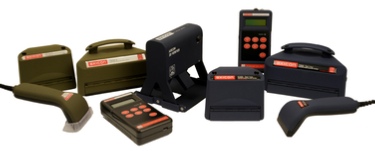

Tel: (630) 235 6077
Email: jn@codemasterllc.com



After the Quick Check What's Next?
When Honeywell announced the End of Life Plan for the QuickCheck verifier line on June 9, 2011 the replacement options they listed were all Axicon products. Honeywell stopped all verifier shipments on February 29, 2012.
Now that the QuickCheck verifier is officially dead, let’s take a close look at the Axicon verifiers that Honeywell referenced as a “suitable alternative.”
Until the QC890 was introduced, all QuickCheck verifiers were portables, except for the QCPC600 which always was rather an odd duck, and part of the HHP acquisition in 2007. Certainly portability was mainstream and consistent with the name “QuickCheck.” These were devices meant to do spot checking out on the shop floor. Bringing the verification report into a computer was an after-
Honeywell missed the mark—or perhaps the world changed and they didn’t change with it. Bad barcodes have become a serious liability in the supply chain. A quick check of barcode quality is still a great feature, but capturing the verification report, archiving it and sharing it via email are essential. Sacrificing this to portability is asking a lot of users.
Axicon verifiers are USB tethered to the user’s PC or Mac. This solves the problem of archiving and sharing without sacrificing portability: the three flagship Axicon linear verifiers are fully convertible from tethered to portable with the clever PV1000 Portable Display Unit or PDU.
Axicon’s USB tether solves another QuickCheck nuisance: the NiCAD battery. Users would leave the QuickCheck plugged into the recharger; soon the verifier wouldn’t operate as a portable anyway. When NiCAD’s became hard to find, users would substitute alkaline batteries, forget they were installed, and plug the verifier into the recharger, explode the batteries and cause an expensive problem. The tethered Axicon verifier has no onboard batteries at all. The PDU can use any AA battery and has no provision for onboard recharging, so the unit cannot be ruined in this way by the user.
QuickCheck 800’s came with a gun-
The solution: buy optional wand devices, available in pen or mouse configuration. Wand devices were available with a single aperture only, so to do a full range of symbologies, you might need 4 or 5 different wands, know the X dimension of each symbology in order to select the correct wand, and recalibrate the unit every time you changed the wand. At $375 each, your wand library could cost as much as the verifier.
Axicon verifiers perform full ANSI/ISO verification all the time, and automatically select the right aperture for the symbology being verified. No user intervention is needed. Place the Axicon verifier on the symbol and press a button. No wands to move, no operator technique, no learning curve.
In October, 2007 when Honeywell acquired Handheld Products (HHP) there were high hopes in the barcode business that this would mean revitalization of the venerable QuickCheck verifier.
Five years later, Honeywell was still manufacturing the same product line of QuickCheck verifiers, having made no meaningful improvements or developed any new verification devices. Neither did Honeywell respond to the rapidly emerging new 2D matrix codes and new stacked symbologies such as GS1 DataBar and PDF417.
Meanwhile, Axicon, a quiet yet dedicated company in Oxfordshire in England was growing into a global presence, with offices in 7 nations, and not just improving upon Honeywell complacency but leading with brilliant new thinking and innovating approaches to solving old problems.
Honeywell was wise to recommend Axicon verifiers; they are everything the QuickCheck should have become—and more.